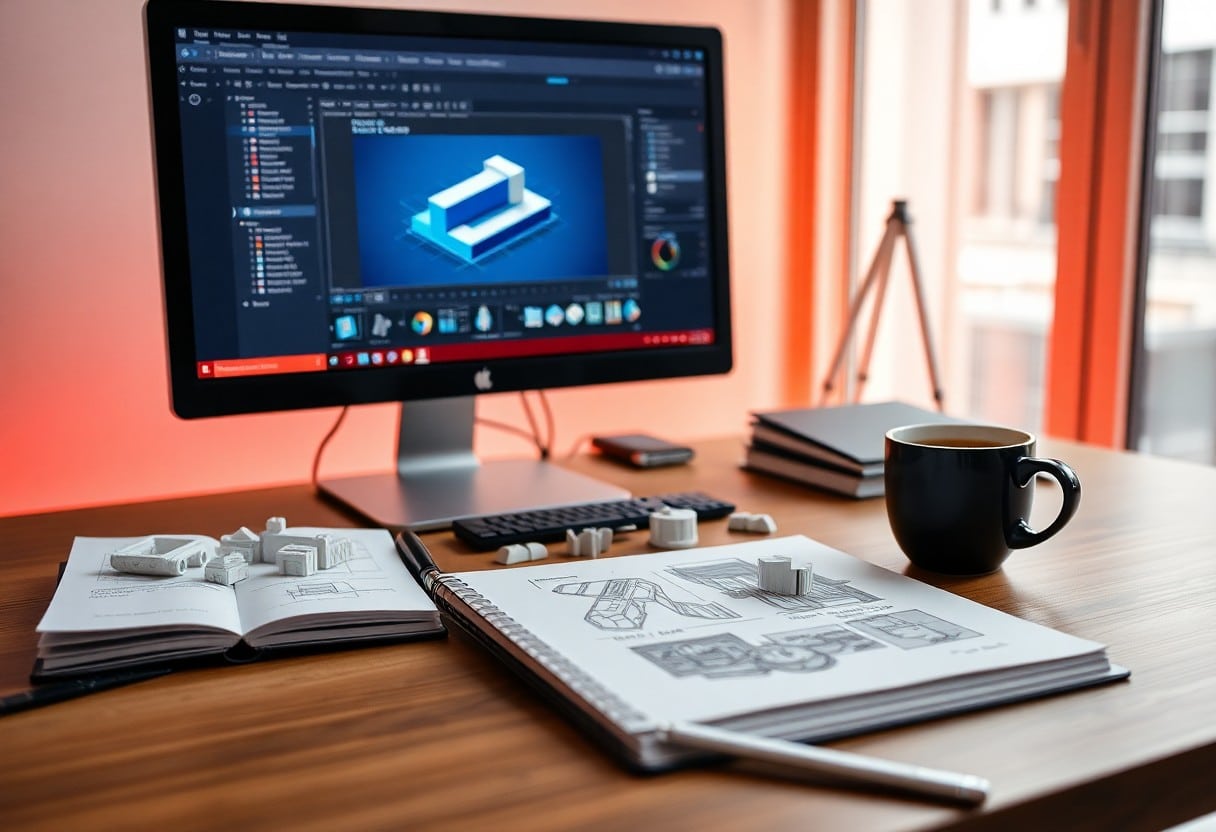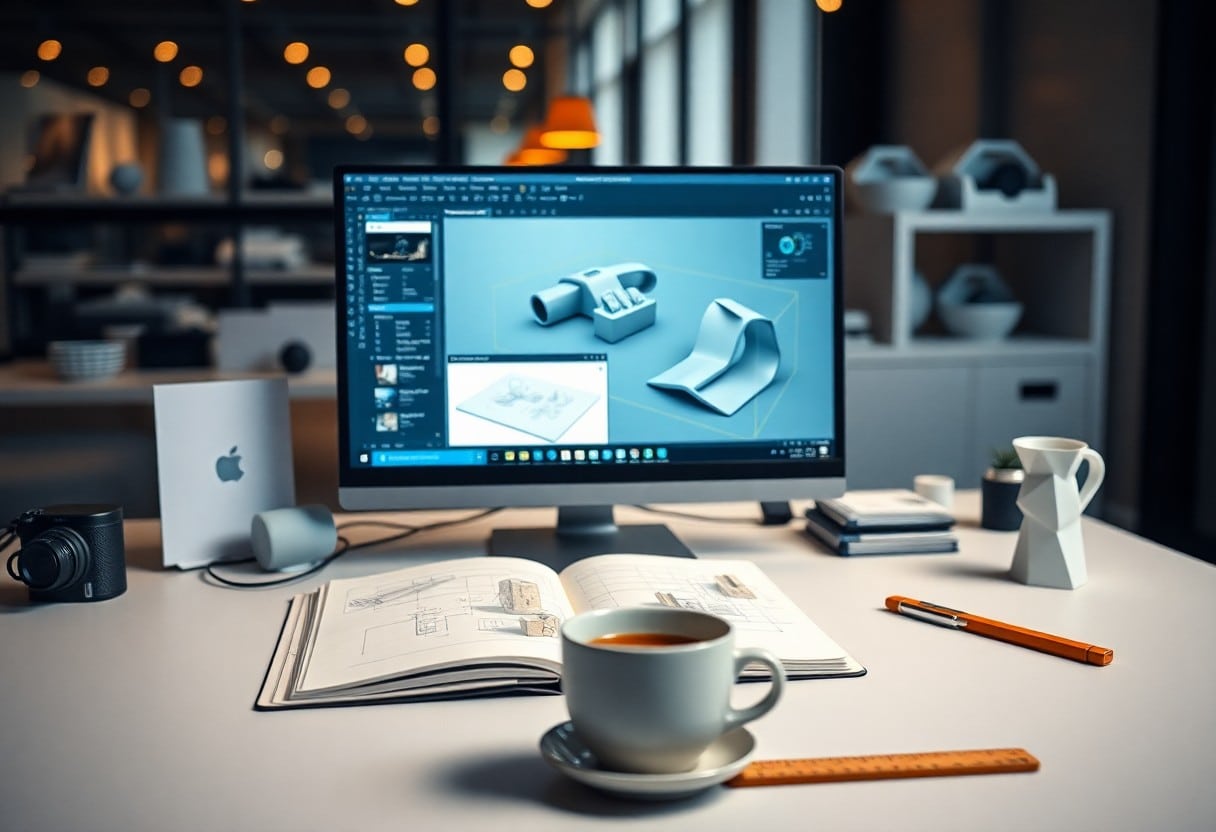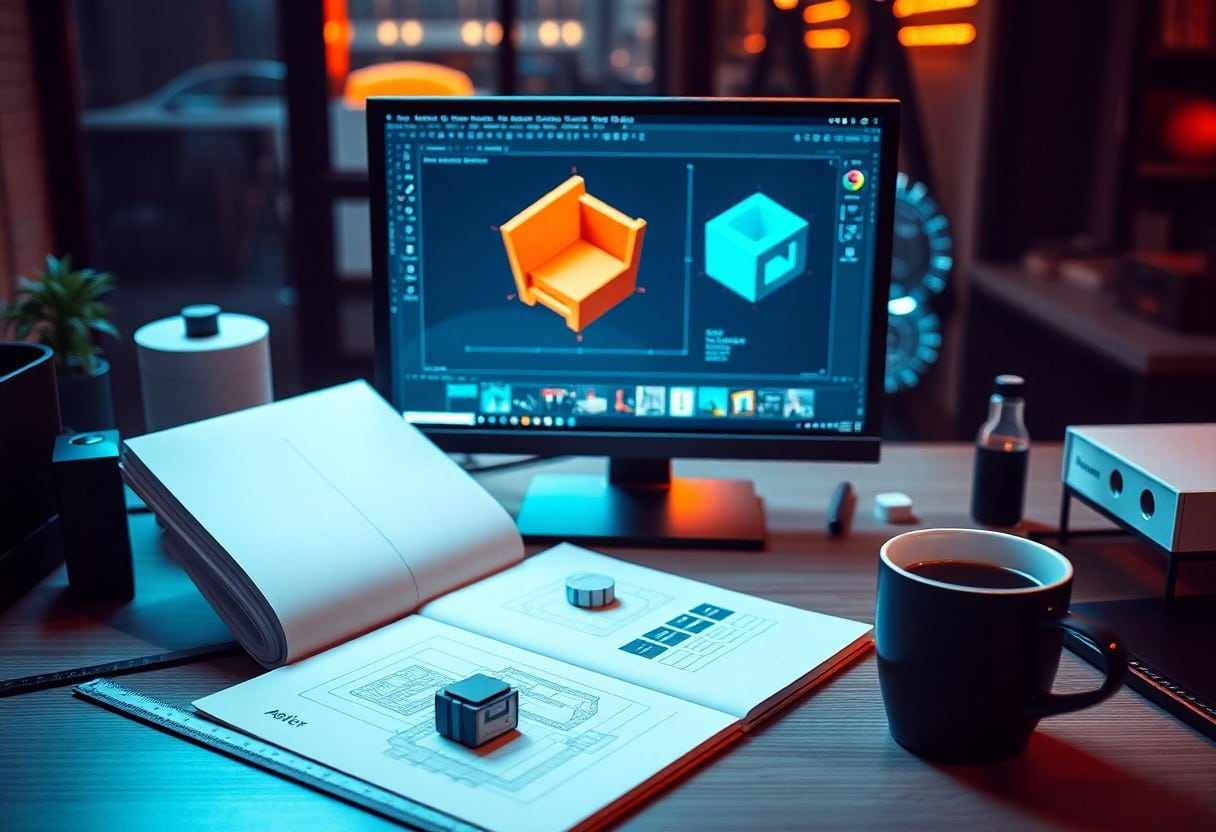Mastering 3D Design Programs - 5 Steps Every Beginner Should Take
In today's digitized world, learning to3D DesignPrograms are essential for enhancing your creative and professional skills. Whether you want to enterGame DevelopmentWhether it's in product design or animation, getting it right can make all the difference. This article will guide you throughFive Key StepsThe program is designed to help you avoid common pitfalls in the learning process and to allow you to improve your abilities more efficiently.
Summary of key points:
- Select Software: Learn about the 3D design programs available on the market and choose one that suits your needs.
- Learning the Basics: Master the basic concepts of 3D design such as modeling, rendering, and animation.
- Practical Exercises: Improve your skills with hands-on exercises, such as creating simple 3D objects.
- Reference Resources: Utilize online courses, tutorials, and community resources to further your learning and overcome challenges.
- Project: To be involved in real-world projects to enhance your practical skills and creativity.
- Continuous Updates: Continuously learn and adapt to new tools and techniques as technology advances.
- sharing exchange: Participate in design communities and share your work with others for feedback and inspiration.

Understand the basic concepts of 3D design
Before entering the world of 3D design, you need to master some basic concepts. These concepts will help you build a solid foundation that will give you confidence in your future endeavors. From understanding what makes up a 3D model to mastering the software interface, these basics are the first step in becoming a good 3D designer.
Key Terms
In 3D design, someKey TermsSome of the terms you should be familiar with include "polygon," "texture," and "lighting. Understanding these terms will help you learn and communicate more fluently and avoid misunderstandings and confusion.
Basic concepts in 3D modeling
Effective learning in 3D modeling requires mastery of a few thingsbasic conceptThese concepts include geometry, topology, and proportion. These concepts will help you create more realism and depth in your designs.
First of all, geometric shapes are the foundation of 3D modeling; they form the shape of the objects you create. Secondly, the topological structure relates to the way polygons are connected, which affects how your model behaves when it moves and deforms.Finally, proportion plays an important role in the design process. Finally, proportions play an important role in the design process. The right proportions can enhance the realism and beauty of an object.By mastering these basic concepts, you will be able to be more flexible and go further in your 3D design journey.

Choose the right software
When starting your 3D design journey, it is important to choose the right software. There are many choices on the market, including free and paid software. Depending on your needs and design goals, it is necessary to understand the features and limitations of each software. For more advice, please refer to this article's10 Steps to Mastering the Rules for Commercial Use of DronesThe
Popular 3D Design Programs
Among the many 3D design programs available, certain tools are particularly popular, such asBlender,AutoCADrespond in singingSketchUp. These programs enable novices to learn and use them quickly due to their powerful features and extensive community support. Choosing a program that suits your needs will help you start your design journey more smoothly.
Considerations for Beginning Learners
When you choose a 3D design software, there are severalconsiderationThings to keep in mind include the user-friendliness of the interface, the learning curve, and the resources available to support it. You need to find a program that works for youEasy to get startedIt is important that you have the right software in place so that you don't get frustrated when you start. Assuming that your choice meets these needs, it will be easier for you to enter this creative field.
- user friendliness
- Learning Curves
- Resource Support
In addition to the above factors, you should also consider yourHardware Requirementsrespond in singingBudget. Some high-end software may require computers with higher performance, while others are suitable for ordinary hardware. For the best experience, make sure your device can support the software you choose and make an informed decision. Assuming your choice meets these requirements, you'll have a more attractive learning experience.
- Hardware Requirements
- Budget Considerations
Learning through online resources
When learning 3D design, utilizeOnline ResourcesIt's an indispensable process. A variety of teaching resources and support communities can help you improve your skills and accelerate your learning curve. These resources are not only easy to access, but they cover almost every topic you'll ever need, so you can learn anytime, anywhere.
Instructional Videos and Lessons
There are a number of online programs that offerInstructional VideosThese are great resources for beginners. These resources usually start with the basics and guide you through more complex concepts. Start by exploring free YouTube videos and specialized online course platforms to help you learn at your own pace.
Community forums and support
become a membercommunity forumIt will give you valuable experience and tips, as well as the opportunity to ask questions of other professionals and enthusiasts. Asking and answering questions in these forums will help you gain a deeper understanding of various aspects of 3D design and build your own network.
Community forums and support not only provide immediate solutions, but also a place to share and learnflat-roofed buildingYou can find solutions, get inspiration, and even get feedback to improve your work. You can find solutions, get inspiration, and even get feedback to improve your work. When you participate in the forums, be sure to share your own experiences, not only to help others, but also to deepen your understanding of 3D design.

Practice with real projects
Once you've mastered the basics, it's important to apply your knowledge to real projects. This will not only improve your skills, but also help you understand industry standards. You can refer to this articleWhat aerial composition tips make your drone photography stand out?The first step is to get more guidance and inspiration.
Small projects to start
Small projects are the best place for beginners to start. You can start with simple models of objects such as furniture, fruits or small toys so that you can focus on the details and techniques. These projects won't take too much time and will help you build your confidence over time.
Building a Portfolio
Building a strong portfolio is essential to showcase your skills. Your portfolio should contain your best work and show your diversity and style. Don't be afraid to fail in your presentation because it shows your ability to grow and learn.
When building your portfolio.Make sure each item is clearly describedFor each project, describe the techniques and challenges you used. Include not only successful work, but also projects that are unfinished or have room for improvement, so that you can demonstrate your learning process.A well-curated portfolio can significantly enhance your appeal.Whether you're looking for a job or taking on freelance projects.
Seeking Feedback and Iteration
In the course of learning about three-dimensional designSeek feedback from othersIt's important. Not only will it help you identify your weaknesses, but it will also stimulate new ideas. Talking to your peers or joining a design community can give you even more valuable advice. In this regard, you can refer toStep by Step - The 6 Best Techniques for Drone 3D ModelingIn addition to the above, you will also be able to learn from the guide.
Importance of constructive criticism
Constructive criticismIt helps you to identify weaknesses in your design and gives you suggestions for improvement, thus enhancing the quality of your work. Treating critiques correctly will not only broaden your horizons, but also facilitate your growth in 3D design.
Perfecting skills through feedback
Use the feedback received to Adjustments and improvements Your design is the key step. By practicing repeatedly, you'll be able to master the technique more precisely, further enhancing your creativity and self-confidence.
More deeply, feedback is a catalyst for the improvement of your skills. Based on what others say, you can tailor your workflow or design ideas. Not only does this shorten the learning curve, but it also helps you to Avoiding Common MistakesEach feedback provides you with a new perspective that promotes your continued growth. Each piece of feedback provides you with a new perspective and facilitates your continued growth. Being open to criticism as you refine your work will become part of your design journey and lead to significant improvement.
Mastering the 3D Design Process - 5 Steps Every Beginner Should Take
In conclusion, mastering 3D design programs requires effective learning strategies and persistent efforts. You should start with the basics, choose the right tools, make full use of online resources for learning, and consolidate your skills with practical projects. Interacting with the community and sharing your work will also help you grow faster. With these five steps, you will be able to grasp the core of 3D design and start a more creative career.
Frequently Asked Questions
Q: What is a 3D design program?
A: 3D design programs are software used to create three-dimensional models and animations. They are widely used in game development, movie production, architectural design and industrial design.
Q: Where should a beginner start when learning 3D design programs?
A: Beginners should start by choosing a suitable 3D design program, such as Blender, Maya or 3ds Max, and then understand the basic interface and tools of the software.
Q: What are the basic skills needed to learn 3D design?
A: Learning 3D design does not necessarily require special skills, but a grasp of some basic art concepts such as composition, color theory, and styling will be helpful in the learning process.
Q: What online resources are available to help me learn 3D design?
A: There are many online resources including YouTube tutorial videos, Udemy courses, and specialized 3D design forums and communities that can help learners from beginners to advanced users.
Q: What are the common mistakes I should avoid when learning 3D design programs?
A: Common mistakes include constantly trying to use all the tools without mastering the basic functions and neglecting portfolio building. It's important to focus on the basics and take it step-by-step.
Q: How long does it take to learn 3D design?
A: The time it takes to learn 3D design varies from person to person. Usually it takes a few months for a beginner to master the basics. To become proficient, it may take several years of continuous practice and project experience.
Q: How should I present my finished 3D design?
A: Completed 3D design work can be showcased through online portfolios, social media platforms, or participation in design competitions. This helps to gain feedback and attract the attention of potential employers.




